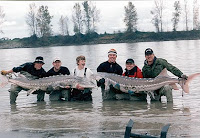Wisdom Quarterly HALLOWEEN SERIES
Too bad most of us do not believe in science. If we did, we'd believe in ghosts. What will happen when science dictates there is enough evidence for disembodied phenomena? Frightening thought. Science-lovers run out of haunted dwellings as quickly as ignoramuses. Why? The body knows what the brain cannot yet accept. What? Seen and unseen monstrosities roam about and among us. Wisdom Quarterly is only interested in the real-life ones in history and today.
Matt Kaplan, The Science of Monsters (ScienceFriday.com, Oct. 26, 2012)
 At their most basic level, monsters represent fears held by society, fears associated with dangers perceived in the surrounding world.
At their most basic level, monsters represent fears held by society, fears associated with dangers perceived in the surrounding world. |
| The Science of Monsters (Matt Kaplan) |
These fears have a powerful evolutionary history by encouraging people to flee instead of fighting suicidal battles. When ancient hunters encountered a saber-toothed tiger by accident, they ran. When the human ancestor Homo erectus caught angry cave bears by surprise, it ran. When chimpanzees and [our sexy cousins the] bonobos, the nearest genetic relatives to modern humans, encounter large predators in the wild, they run.
While Hollywood heroes have made running away distinctly unpopular on the silver screen, every single actor who has ever portrayed a hero/heroine who stood his or her ground against some abominable terror comes from a long genetic lineage of cowards who fled in the face of danger.
 |
| Real life sea serpents: sturgeon (naga) |
That is why they are here to act today. If their ancestors had fought against monsters far more powerful than themselves, as Hollywood heroes do all the time, their lineage would have been destroyed by predators long ago. Fear, in short, keeps people alive. But fear can also go too far.
Recent work in animal behavior has revealed something fascinating: There are personality types in animals. Among fish in a single species, there are adventurous individuals, ready and willing to take risks, and there are more cautious and timid individuals, fearful of doing anything that could put them in danger.
Similar variations in personality are starting to be found in birds and mammals too. A recent study led by Kathryn Arnold at the University of York revealed... Being courageous or curious undoubtedly presents serious dangers. Ongoing studies indicate that fish with more daring personalities are...
 |
| Yeti's bones, Tibet (factfictionandconjecture.ca) |
Whether some humans are genetically predisposed to be more adventurous than others remains to be determined, but there clearly are some people who ultimately are more willing to take risks. Make no mistake, the instinct to flee from danger is still deeply rooted in every person’s brain, but some of us are more willing than others to go to places associated with danger....
LISTEN: Science of Monsters (Science Friday, NPR)
Parapsychology: Scary science (Coast to Coast AM)
Like lion cubs play-fighting in the safety of their den, monsters may be allowing threats to be toyed with in the safe sandbox of the imagination.
LISTEN: Science of Monsters (Science Friday, NPR)
Parapsychology: Scary science (Coast to Coast AM)
Like lion cubs play-fighting in the safety of their den, monsters may be allowing threats to be toyed with in the safe sandbox of the imagination.
So if monsters are present in society for both pleasure and mental practice for future frightening interactions, what happens when our fears are overcome? What then?
 |
| Camera catches real ghost (angelsghosts.com) |
The Minotaur is no longer with us, but aliens are. In a sense, monsters, while strictly the stuff of fantasy, experience evolution at a rate that is in stride with the pace of human understanding of the surrounding world. Science, the empirical testing and exploration of the world, which is about as seemingly unrelated to monsters as can be... [actually only denies their existence because of acceptability-filters not because of an absence of evidence.]
[Excerpted from Medusa’s Gaze and Vampire’s Bite: The Science of Monsters (Scribner). Copyright © 2012 by Matt Kaplan. Kaplan is a science journalist and a regular contributor to The Economist. He has also written for National Geographic, New Scientist, Nature, Scientific American, Science, BBC Wildlife, and The New York Times. When not chained to a desk, he travels the wilds of the world as part of a London expedition group. He lives in London.]



















































































































































































































































No comments:
Post a Comment